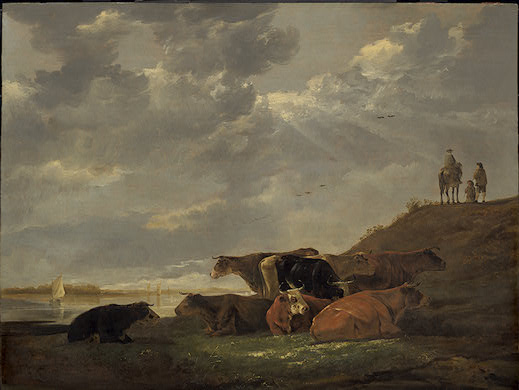It is exactly a year since the thousandth case was reported in the recent outbreak of foot-and-mouth disease. Chosen in the hope of a brighter future for the bovine population, and those whose livelihoods depend on it, this week’s picture is a cattle-farmer’s idyll created by the greatest painter of cows in the history of Western art. Aelbert Cuyp’s River Landscape with Cows, of about 1648-50, shows livestock at rest in the predominantly flat and watery pastureland surrounding the artist’s native town of Dordrecht, in Holland. The picture is owned by the National Gallery of Art in Washington but is currently on loan to the National Gallery in London as part of an exhibition dedicated to Cuyp’s work (until 11 May).
Cuyp was not the only seventeenth-century Dutch artist to depict the cow, but he was the first to invest that particular ruminant with such unexpected grandeur. Earlier painters had included cattle in their work, but only as incidental elements in the landscape, usually representing them as rather shambling and inelegant creatures (as indeed a milk-laden cow can be, hobbled as she is by the dangling uddered football between her hindquarters). By contrast Cuyp’s cows and bullocks are noble contemplatives, who do not merely occupy the land but preside magisterially over it. Shown sitting or standing, and mostly in profile, they have been endowed with a powerful air of solemnity. The animal in the middle of this particular group fixes the viewer with a gaze that might almost be described as quizzical.
No painter has ever caught the heaviness and substantiality of prize cattle as Cuyp did. He painted their undulating profiles, thick necks and meatily rippling flanks – thrown into relief by such a dramatically raking effect of contre-jour light, in the case of the brown cow...


